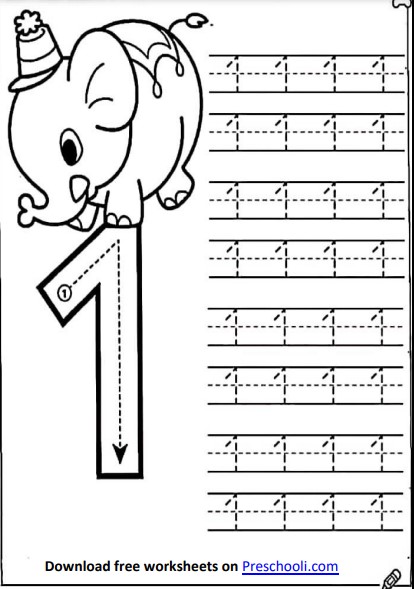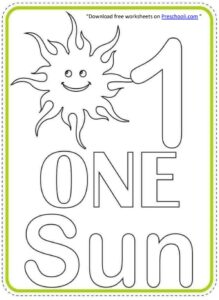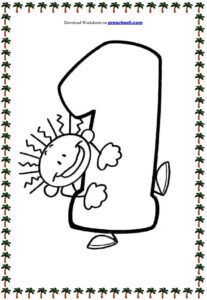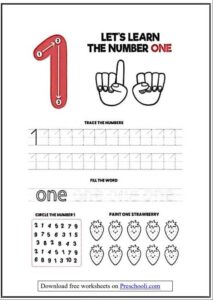The Ultimate Guide to Early Math: 123 Worksheets for Kids and Educators
In the wonderful world of education, nothing quite matches the satisfaction of watching a child’s eyes light up as they grasp a new concept. And when that concept involves 123 worksheets the building blocks of math the feeling is only amplified. Whether you’re a parent, teacher, or homeschooler, the importance of early numeracy skills cannot be understated. That’s where worksheets come in, providing a tangible, visual aid to support a child’s understanding of numbers and their value.
In this comprehensive guide, we explore the rich tapestry of 123 worksheets, designed to not only enhance your child’s understanding of numbers but also to inject a healthy dose of fun into their learning process. From basic to advanced concepts and a myriad of resources for educators and parents, this post is a treasure trove for anyone involved in teaching early math.
Why 123 Worksheets Are Essential for Kids
Before we plunge into the details of 123 worksheets, it’s important to understand the role they play in early childhood education. Here’s a snapshot of why these resources are so vital:
- Concrete learning: Young children often learn best through hands-on experiences. 123 worksheets provide a physical medium where they can trace, color, and interact with numbers.
- Visual aids: Worksheets with visual elements can make math less abstract and more accessible to little learners.
- Skill reinforcement: Practice makes perfect, and worksheets offer an opportunity for kids to reinforce fundamental skills in a structured manner.
- Preparation for school: For preschoolers, engaging with worksheets is an excellent way to prepare for the more formal learning structures of elementary school.
- Progress tracking: For parents and teachers, worksheets offer a way to track a child’s progress and identify areas that may require additional focus.
The Basic Tools of the Trade
To kickstart your adventure with 123 worksheets, you’ll need some basic tools. Nothing fancy, just the essentials to bring these sheets to life and make learning numbers a joyful experience for kids.
Crayons and Coloring
A colorful approach to number learning is not only fun, but it also enhances memory and helps distinguish between different quantities. Invest in a good set of crayons or markers in various shades to make number coloring activities vibrant and engaging.
Scissors and Glue
These aren’t just for arts and crafts – they’re an important tool for kids to practice their fine motor skills while working on number recognition and counting. Cutting along the lines of numbers and pasting them in the right order is a simple yet effective activity.
Number Stamps
If you want to add a little novelty to the worksheet experience, consider number stamps. They’re clean, consistent, and kids love them. Plus, they offer the added benefit of being reusable, making them an eco-friendly choice.
Counting Objects
To teach the concept of quantity, nothing compares to using real-world objects. Gather some beans, buttons, or other small items that kids can count and place on their worksheets. This tactile approach helps solidify the relationship between numerals and the number of objects.
Engaging with Worksheets: Making Learning Interactive
The true magic of 123 worksheets lies in their interactive nature. Here, we provide several examples of how to turn passive learning into an engaging, hands-on experience.
Number Tracing Activities
Encourage children to trace numbers with a marker or their finger. Not only does this help improve their writing skills, but it also reinforces the shape and order of each number.
Connect the Dots
Connect-the-dots activities are a fantastic way for kids to learn sequence and practice number order. They’ll be so excited to see what picture emerges that they won’t even realize they’re learning.
Fill in the Missing Number
This is a great exercise for sequencing. Kids can practice their counting and number recognition by filling in the missing number in a sequence, such as 1, 2, _, 4, 5.
Coloring by Number
Coloring by number can be a calming yet educational activity. It reinforces number recognition, while also helping kids understand the relationship between numbers and quantities more reds for the number 3, more blues for 5, and so on.
From 1 to 10: Exploring the Numbers
The focus of early number learning is often on the digits 1 to 10. This section provides a deep dive into worksheets that specifically target each of these numbers.
One Is Fun
With activities centered around the number 1, children learn that it represents a single item. They can draw one of their favorite objects, stamp one of the same image, or color the object into the worksheet.
Two by Two
The concept of pairs starts with two. A worksheet featuring the number 2 can include tasks like drawing pairs, completing simple addition or subtraction sentences with 2, and doubling colors – two blues, two yellows, and so forth.
Three’s Company
Activities related to the number 3 can teach kids the concept of sets. They can draw simple shapes, connect three dots to create a triangle, or learn about the three primary colors through interactive tasks.
Fun with Four
Exploring the number 4 can involve more complex shapes like a square or a rectangle, practicing counting by 4s, and understanding that four quarters make a whole.
High-Fiving Five
The number 5 opens up a world of counting that corresponds to the fingers on a hand. Practice addition and subtraction with 5 and continue exploring sets with Starfish, who has 5 arms.
Six and the City
Use the number 6 to introduce the concept of halving and wholesomeness. Halves of cakes, pizzas, or other objects can be a fun way to understand equal parts. Kids can also practice counting up to 6 and back down again.
Lucky Seven
The number 7 is often considered lucky, but there’s no luck involved when it comes to learning it. Activities can include tracing sevens, coloring the seven in different ways, and understanding that 7 is made up of 5 and 2, or 4 and 3.
Eight in Infinity
The number 8, a symbol of infinity, can be bent and shaped in many ways for learning. Kids can create unique shapes, understand that 8 is made up of 4 and 4, or even explore its relationship to multiplication tables.
Nine and Shine
Activities with the number 9 can be sparkly and bright. From creating a cast of nine characters for a scene to learning that 9 is made of 5 and 4, the emphasis is on creativity and comprehension.
Perfect 10
The number 10 is a milestone. Practice counting to ten, understand what comes before and after 10, and begin working with place values, perhaps by recognizing that a zero means “no tens” in the number 10.
Going Beyond: Advanced Concepts with Numbers
Once kids have a grasp on the basic numbers, it’s time to introduce more advanced concepts that build on their early learning. This section covers activities that encourage kids to understand numbers in context and to use them in problem-solving situations.
Ordering and Sorting
Challenge kids to order numbers from least to greatest or greatest to least, and to sort sets of numbers into odd and even categories.
More or Less
Use comparative language to describe numbers – more than, less than, greater, and fewer. Engage in activities that illustrate these concepts with clear visual representations.
Simple Addition and Subtraction
Start kids on the path of calculation with simple addition and subtraction problems. Use visuals to help them understand the mechanics of counting up and down with numbers.
Grouping and Sharing
Introduce the concept of division through sharing and grouping. How many apples would each of the three friends get if they share 9? Groups of 3, or 3 divided by 9, teaches early division.
Patterns and Sequences
Create and identify number patterns and sequences. This can be as simple as coloring in shapes based on their position in a sequence, or more complex, like identifying a pattern in a list of numbers.
Free 123 Worksheets and Where to Find Them
The internet is a vast resource for 123 worksheets, many of which are available for free. Here’s a list of websites where you can find an array of early math resources for your kids or students.
With a wide variety of worksheets for every number, Education.com is a goldmine for both parents and educators.
In addition to 123 worksheets, K Learning provides a plethora of math resources for kids at different skill levels, all for free.
A great resource for homeschoolers, this site offers a range of worksheets and educational ideas for parents.
While not entirely free, Super Teacher Worksheets offers some free resources and is an excellent source for educators.
Worksheet Etiquette: Best Practices for Engaging with Worksheets
There are some dos and don’ts when it comes to using 123 worksheets effectively. Here are a few best practices to keep in mind.
Dos
- Keep it positive: Learning should be a positive experience. Praise effort and provide ample encouragement.
- Be patient: Every child learns at their own pace. Be patient and provide ample opportunity for practice and exploration.
- Make it a routine: Incorporate worksheet time into a regular part of the day. Consistency helps reinforce what kids are learning.
Don’ts
- Don’t stress: Avoid making worksheets a chore or a cause for stress. Keep it light and fun.
- Don’t rush: Learning should be an enjoyable, gradual process. Don’t rush through worksheets just to tick off a box.
- Don’t overdo it: Balance is key. Use worksheets as part of a diverse learning experience that includes play, hands-on activities, and real-life math.
Conclusion
123 worksheets are not just pieces of paper; they’re tools to unlock the fascinating world of numbers for little minds. By making learning interactive, and by exploring numbers through engaging activities, kids can enjoy a solid foundation in early math that will serve them well throughout their education. Whether you’re a parent looking to supplement your child’s learning at home or an educator seeking to add variety to the classroom, these resources are your ticket to a successful numeral adventure.
Remember, the most important aspect of early math education is to instill a love for numbers and a sense of confidence in their understanding. With the right approach, even the most mundane of worksheets can become windows to discovery and joy. Happy teaching, and here’s to a lifetime of numerical prowess.
Join our Facebook Group



